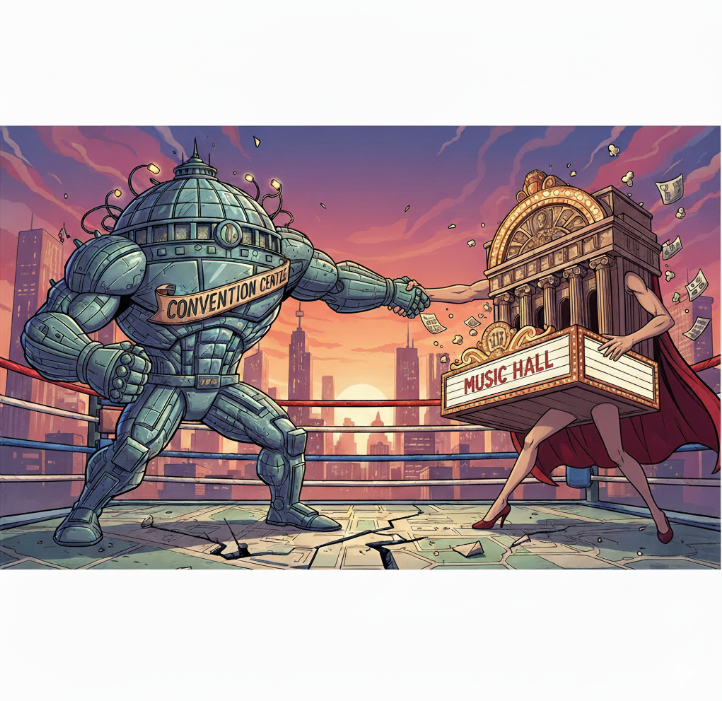Why the fight matters for the meetings industry
Reading time: 3 Minutes
Austin is gambling big on concrete. The city has already begun tearing down its downtown convention center to make room for a $1.6 billion expansion that will nearly double its size. Officials say the old building was too small—turning away half of potential events—and predict the new facility will generate $750 million a year in economic impact. And because the project is financed with hotel occupancy taxes, not property taxes, they argue locals won’t feel the pinch.
It’s the standard convention-booster playbook: go bigger, stay competitive, keep pace with Dallas, Houston, and Las Vegas. Cities that don’t expand their infrastructure risk losing lucrative trade shows to those that do. Austin’s expansion even comes wrapped in green promises, touting a zero-carbon footprint.
But critics see something very different: a city mortgaging its future for a 1990s business model. Local activists are gathering signatures to force a public vote. They call the expansion a “boondoggle” that will lock up more than 77% of hotel tax revenue for 30 years to pay off $3–4 billion in debt. Worse, the existing convention center—opened in 2002, expanded in 2010—was still paying off old bonds when it was abruptly shuttered this April. An audit found the venue had been losing money for years. Meanwhile, demolition has already driven away major events, with even SXSW hinting it may decamp.
So Austin finds itself in the middle of a very old economics lesson: the “guns vs. butter” dilemma. In this case, the “guns” are the mega-venues city leaders believe will fire up economic growth; the “butter” is the culture, parks, and quality-of-life features that make a city worth visiting in the first place.
Here’s the uncomfortable truth: convention centers are risky bets. Even before Covid, national attendance numbers were flat despite billions spent on expansions. When downturns hit, those venues sit half-empty while cities keep paying the bonds. By contrast, investments in parks, culture, and music reliably attract both residents and visitors.
Further Reading: How Meeting and Event Planners Are Leveraging America’s Repurposed Landmarks
Houston, Austin’s neighbor and rival, offers a smarter blueprint. Yes, it expanded the George R. Brown Convention Center. But it also built Discovery Green, a 12-acre downtown park that now attracts 1.5 million visitors annually and has spurred $1.25 billion in development around it. The convention center benefits, but so does the community.
Austin could do the same. Petitioners are arguing that hotel tax dollars would have a bigger multiplier effect if funneled into live music venues, and eco-tourism, which deliver dividends whether or not the convention business is booming.
The meetings industry should pay attention. Shiny new exhibit halls are meaningless if they sit in cities that feel generic, underfunded, or hostile to locals. Attendees don’t just want a ballroom—they want a city they can’t wait to explore after the sessions end.
Austin’s choice matters because it crystallizes the broader industry debate. Will destinations keep chasing the next billion-dollar box? Or will they recognize that the real draw is the culture outside the walls? The smart money isn’t on “guns” or “butter.” It’s on balance.
Any thoughts, opinions, or news? Please share them with me at vince@meetingsevents.com.





